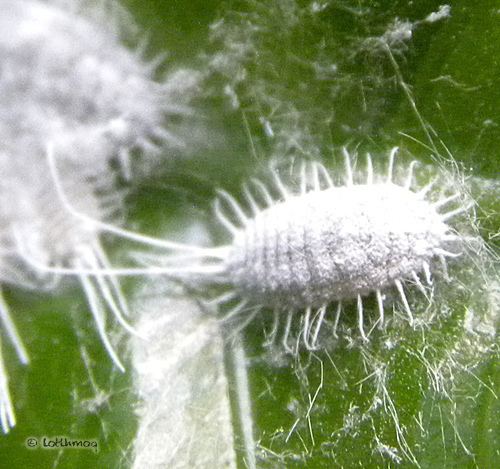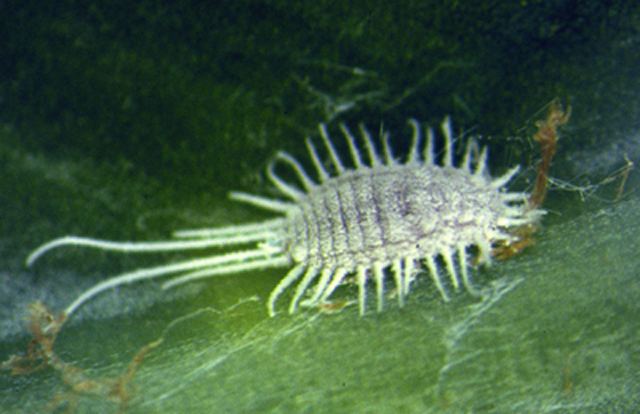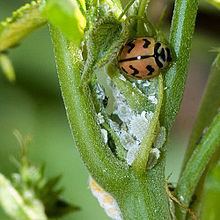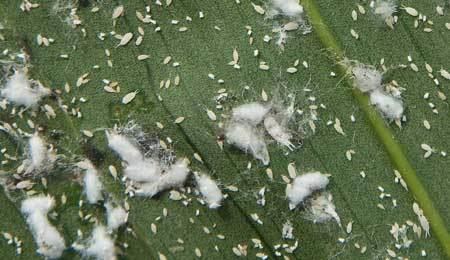Order True bugs Higher classification Scale insect | Scientific name Pseudococcidae | |
 | ||
Lower classifications Planococcus citri, Pseudococcus viburni, Phenacoccus manihoti, Gray pineapple mealybug, Phyllococcus | ||
5 ways to get rid of mealybugs
Mealybugs are insects in the family Pseudococcidae, unarmored scale insects found in moist, warm climates. They are considered pests as they feed on plant juices of greenhouse plants, house plants and subtropical trees and also act as a vector for several plant diseases.
Contents
- 5 ways to get rid of mealybugs
- How to kill mealybugs on your citrus and houseplants pest control tutorial
- Distribution
- Description
- Control
- References

How to kill mealybugs on your citrus and houseplants pest control tutorial
Distribution

Mealybugs occur in all parts of the world. Most occur naturally only in warmer parts, and get introduced into greenhouses and other buildings in cooler countries. It is unlikely that any live in the Arctic or Antarctic, except perhaps in buildings.
Description

Mealybugs are sexually dimorphic: females appear as nymphs, exhibiting reduced morphology, and lack wings, although unlike many female scale insects, they often retain legs and can move. Males are smaller, gnat-like and have wings. Since mealybugs (as well as all other Hemiptera) are hemimetabolous insects, they do not undergo complete metamorphosis in the true sense of the word. However, male mealybugs do exhibit a radical change during their life cycle, changing from wingless, ovoid nymphs to wasp-like flying adults.

Mealybug females feed on plant sap, normally in roots or other crevices, and in a few cases the bottoms of stored fruit. They attach themselves to the plant and secrete a powdery wax layer (hence the name mealybug) used for protection while they suck the plant juices. In Asia, mango mealybug is considered a major menace for the mango crop. The males on the other hand are short-lived as they do not feed at all as adults and only live to fertilize the females. Male citrus mealy bugs fly to the females and resemble fluffy gnats.
Some species of mealybug lay their eggs in the same waxy layer used for protection in quantities of 50–100; other species are born directly from the female.
The most serious pests are mealybugs that feed on citrus; other species damage sugarcane, grapes, pineapple (Jahn et al. 2003), coffee trees, cassava, ferns, cacti, gardenias, papaya, mulberry, sunflower and orchids. Mealybugs only tend to be serious pests in the presence of ants because the ants protect them from predators and parasites. Mealybugs also infest some species of carnivorous plant such as Sarracenia (pitcher plants); in such cases it is difficult to eradicate them without repeated applications of insecticide such as diazinon. Small infestations may not inflict significant damage. In larger amounts though, they can induce leaf drop.
Fossil specimens of Acropyga genus ants have been recovered from the Burdigalian stage Dominican amber deposits and several individuals are preserved carrying the extinct mealybug genus Electromyrmococcus. These fossils represent the oldest recorded record of the symbiosis between mealybugs and Acropyga species ants.
